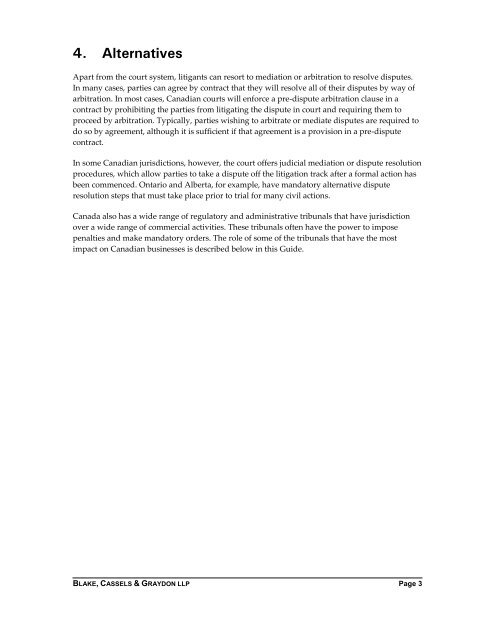Litigation and Dispute Resolution Guide
Litigation and Dispute Resolution Guide
Litigation and Dispute Resolution Guide
You also want an ePaper? Increase the reach of your titles
YUMPU automatically turns print PDFs into web optimized ePapers that Google loves.
4. AlternativesApart from the court system, litigants can resort to mediation or arbitration to resolve disputes.In many cases, parties can agree by contract that they will resolve all of their disputes by way ofarbitration. In most cases, Canadian courts will enforce a pre-dispute arbitration clause in acontract by prohibiting the parties from litigating the dispute in court <strong>and</strong> requiring them toproceed by arbitration. Typically, parties wishing to arbitrate or mediate disputes are required todo so by agreement, although it is sufficient if that agreement is a provision in a pre-disputecontract.In some Canadian jurisdictions, however, the court offers judicial mediation or dispute resolutionprocedures, which allow parties to take a dispute off the litigation track after a formal action hasbeen commenced. Ontario <strong>and</strong> Alberta, for example, have m<strong>and</strong>atory alternative disputeresolution steps that must take place prior to trial for many civil actions.Canada also has a wide range of regulatory <strong>and</strong> administrative tribunals that have jurisdictionover a wide range of commercial activities. These tribunals often have the power to imposepenalties <strong>and</strong> make m<strong>and</strong>atory orders. The role of some of the tribunals that have the mostimpact on Canadian businesses is described below in this <strong>Guide</strong>.BLAKE, CASSELS & GRAYDON LLP Page 3
















